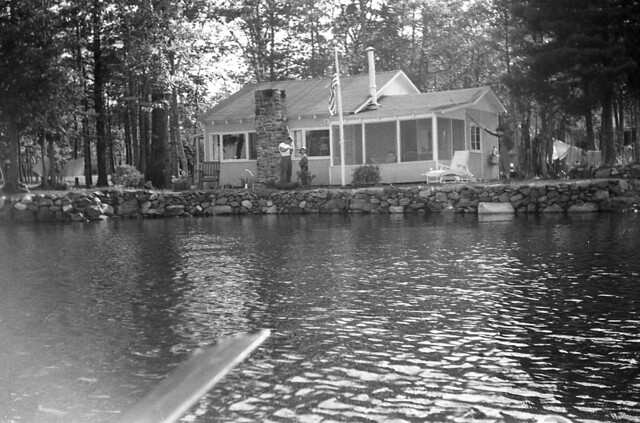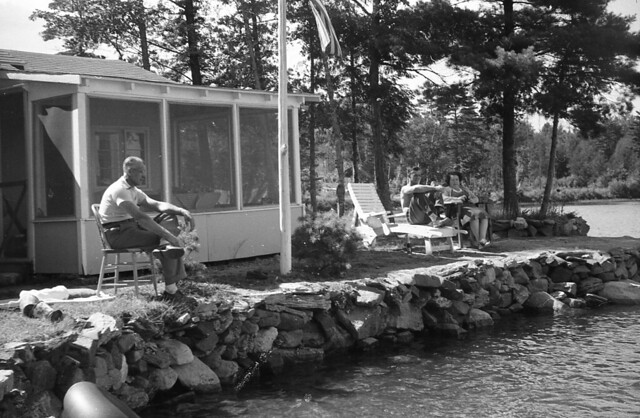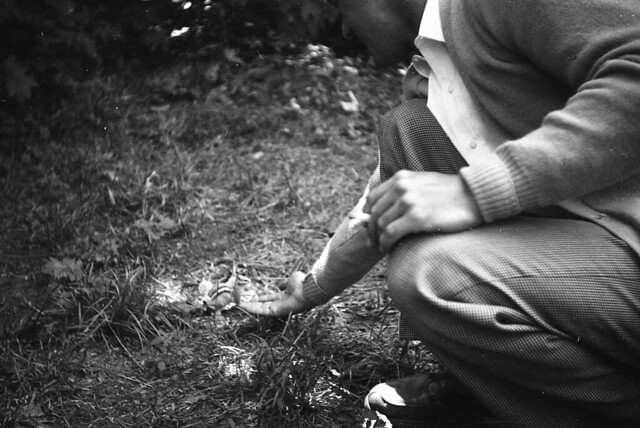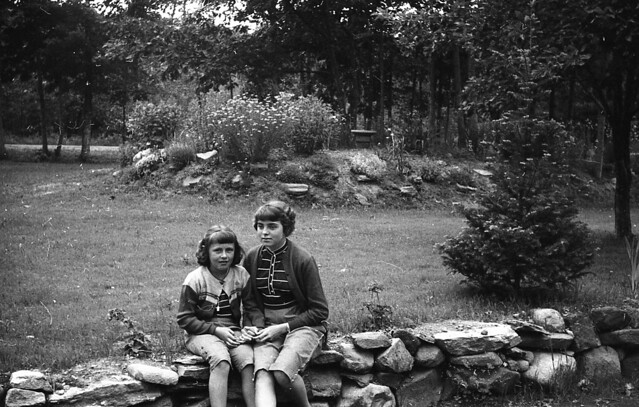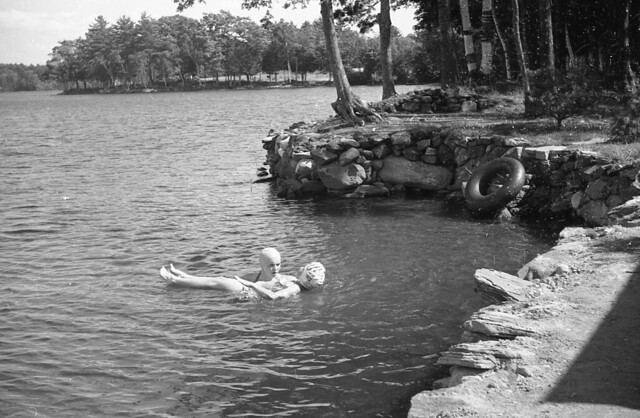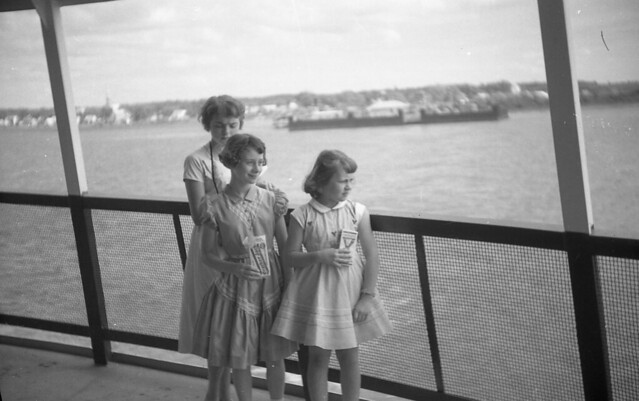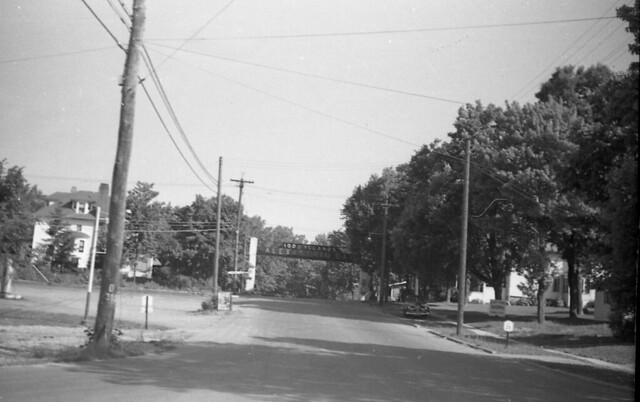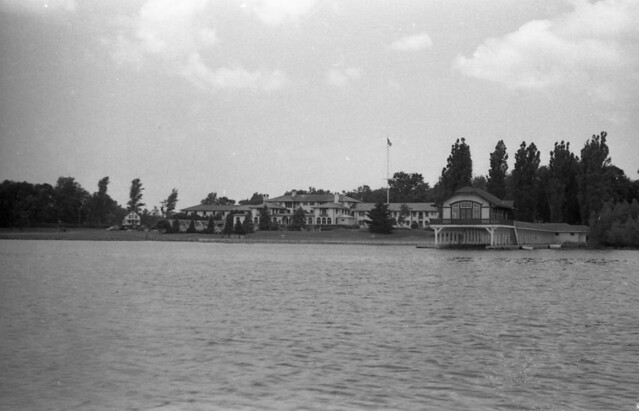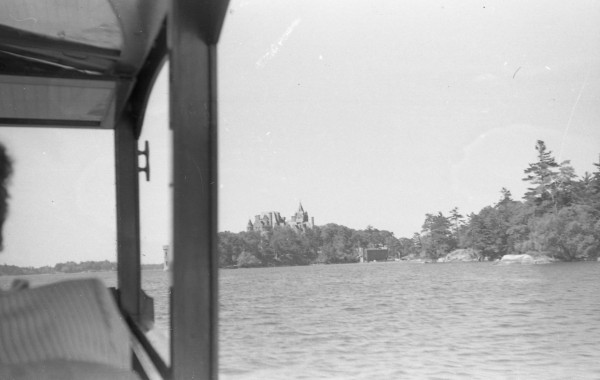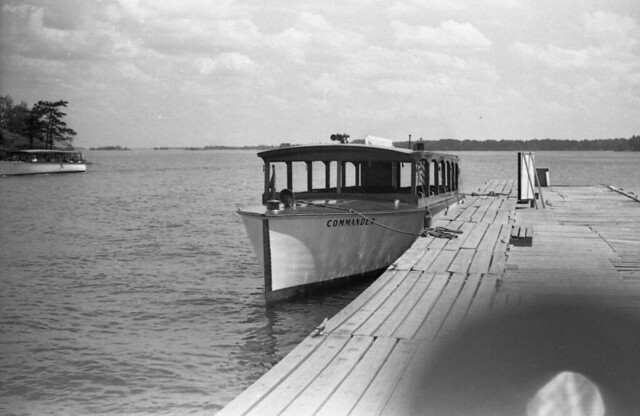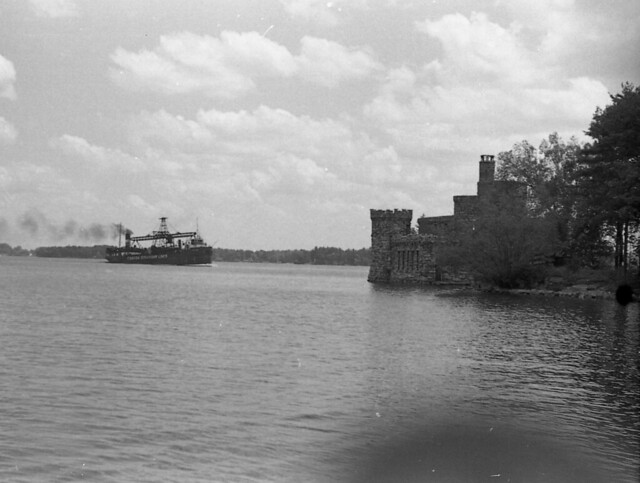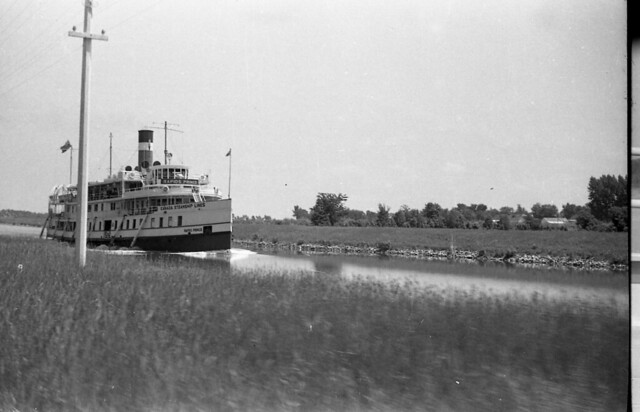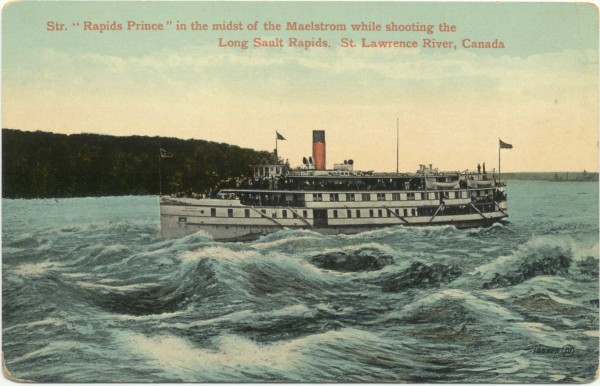For the last few months, I have been sharing photos believed to have been taken by Raymond Albert in the late 1940s through the mid-1950s. In total, the collection consists of about 23 rolls. This post highlights the 19th and 20th roll I am sharing/have shared, in the approximate order they were likely taken. I’m guessing the current rolls were taken around 1955-56.
The main employer in 1950s Rumford, Maine, today a town of less than 6,000 people, was the Oxford Paper Company. Of the 14,000 people who lived in the twin towns of Rumford and Mexico, Maine, a good 3,000 worked daily at “the Oxford.” One writer described it as “that boiling hulk on the riverbank, the great equalizer that took our fathers from us every day and eight hours later gave them back, in an unceasing loop of shift work.” She continues:
The mill. the rumbling, hard-breathing monster that made steam and noise and grit and stench and dreams and livelihoods – and paper. It possessed a scoured, industrial beauty as awesome and ever-changing as the leaf-plumped hills that surrounded us. It made a world unto itself, overbearing and irrefutable, claiming its ground along the Androscoggin, a wide and roiling river that cracked the floor of our valley like the liveline on a palm. My father made his living there, and my friends’ fathers, and my brother, and my friends’ brothers, and my grandfather, and my friends’ grandfathers. They crossed the footbridge over the river’s tainted waters, carrying their lunch pails into the mill’s overheated gullet five, six, sometimes seven days a week.
(excerpt from When We Were the Kennedys, a Memoir from Mexico, Maine by Monica Wood. Mexico was just across the river from Rumford.)
The Oxford Paper Company was at its peak in the 1950s and 1960s, and it helped make Maine the top paper-producing state in the nation. You could see the mill from everywhere in Rumford, and you could it from much farther. The chemicals used in paper making were simply dumped into the Androscoggin River. When these photos were taken, one of America’s early environmentalists and a Rumford native, Edmund Muskie, had just been elected Governor. Paper mill workers spoke with a variety of accents, having come to Rumford or Mexico from a many different places in search of a better life, which many of them found in Rumford. There was plenty of work to be done, and it was difficult, and dirty. But it was steady work, and an honest living, in the 1950s.
The men of the Albert family most likely worked at the mill. When they got time off, they would take their families out of town, to some fresh air, away from the smell of the mill for a bit. The grandparents on both sides of the family were well into retirement age, and from the photo collection, appear to have had vacation homes where the kids and grandkids could enjoy nature. I am guessing this may have been a vacation rental – the person believed to be Raymond Albert’s father appears in one photo, but the next post I will share, with a completely different house, is more likely where his parents actually lived.
It seems like it would have been a great place to go with your cousin (?) to fish, learn about nature, and spend time cooling off in the lake.
Maybe Grandpa lived somewhere up north or northwest, closer to the St. Lawrence? The photo below is probably from the St. Lawrence. The girls are each enjoying a box of Cracker Jacks! I wonder what their prize would have been?
The second roll I’m sharing in this post differs from most of the photos in this collection in that many were taken through a moving car window, or from a boat, and are therefore of varying quality. So I’ll just share a few of the ones that turned out, and give a flavor of the trip they photographed with this roll.
This trip was to Alexandria Bay, New York – a small town that balloons every year with boaters and tourists visiting the “1000 Islands” region of the St. Lawrence River. From there, you can take a cruise and have a look at many of the islands. On many of these islands, there are huge mansions built by the rich and famous. In addition to the shots taken from the moving car window, many of the photos on this roll are of such structures.
One of the buildings they saw was the Boldt castle, started in 1900 by George Boldt, general manager of New York’s Waldorf Astoria, for his wife. When Boldt’s wife abruptly died four years after construction began in 1900, the project was abandoned. When one of the Alberts took the photo below of it in 1956 or so, it had been languishing at the mercy of the elements for half a century. In 1977, the Thousand Islands Bridge Authority would eventually acquire the property and set out to restore it to the condition it was in when construction was halted.
The film roll contains a number of other multimillion-dollar constructions on private islands. Probably the Alberts took a tour on this boat:
And finally, they also caught a glimpse of the Rapids Prince. Under the motto “from Niagara to the Sea,” the Canada Steamship Lines had large inland fleet which included several passenger steamers on which you could book a ticket to “run the rapids.”
The Rapids Prince was added to the fleet in 1913, and it was apparently the last passenger steamer in the fleet when it ran the rapids for the final time in 1949. Prior to the 1950s, when the St. Lawrence Seaway was completed, cargo ships had to unload their cargo onto other ships downstream due to the rapids, but smaller ships such as the Rapid Prince could navigate them in relative safety (though it was grounded twice in its service – in 1922 with passengers stranded about until they could be rescued the following day).
The ad above is from around 1950.
To see other posts about the Alberts, check out this link. To see more of Raymond Albert’s photos on Flickr, check out this album.


